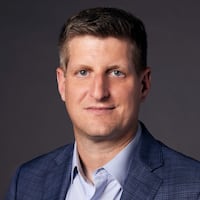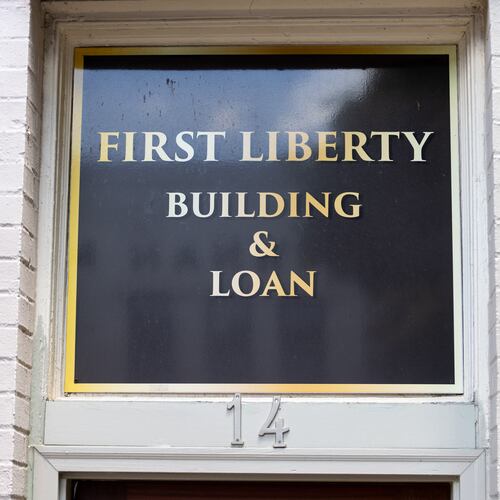As Atlanta lays plans to build a new $1 billion downtown stadium, people in the poor neighborhoods nearby hope for a better outcome than they saw the last time a stadium arose nearby.
About $8 million was committed to Vine City improvements when the Georgia Dome went up. The money financed new houses scattered throughout the area but little else. English Avenue was later added but never received much attention.
This time, with a retractable roof stadium set to replace the Dome, the amount dedicated to surrounding neighborhoods is far higher — $45 million. And so are hopes for what it will do.
“We won’t let what happened then happen this time,” said W.L. Cottrell, pastor emeritus at Beulah Baptist Church, who was involved in meetings on Dome community benefits that he said many were too eager to believe would be effective.
“We had no lawyers,” Cottrell said. “We sat there like nice little preachers, smiling like dogs trying to catch a car.”
The money is expected to come from the Falcons, city and private resources. Details of how it will be spent are yet to come.
First the neighborhoods must agree on what they want — informal wish lists so far include years of pent-up needs — and what can be done to make sure the money is used wisely.
Leaders of the neighborhoods, as well as nearby Castleberry Hill, want the “community benefits package” to resurrect the historic communities with a comprehensive approach that could attract jobs through small business loans and strengthen area schools.
Vine City and English Avenue are just west of the Dome along Northside Drive. They are separated by Joseph E. Boone Boulevard and share Joseph E. Lowery Boulevard as their western boundary. Castleberry Hill is just south of Martin Luther King Jr. Drive.
But the source of one chunk of the money — Falcons owner Arthur Blank’s family foundation, which says it will ante up $15 million — is sounding a note of caution.
Penny McPhee, president of the Blank Foundation, said she’s concerned that some may think the benefits package will be a cure-all, especially in fixing deeper issues of infrastructure, business growth and jobs. The organization is still studying ways to use its donation.
“What foundations can do is to provide seed money and create pilot projects,” McPhee said.
Time to act
With the new stadium in the spotlight - the project passed its final political test on Thursday with the approval of Invest Atlanta - neighborhood leaders are eager to seize the opportunity. They fear that once the stadium’s construction is no longer in the spotlight, the communities’ needs will fall back into the shadows.
In addition to the funding expected from Blank’s philanthropic foundation, $15 million has been promised from Invest Atlanta — the city’s economic development agency — and another $15 million through unspecified private business interests. Invest Atlanta is expected to have the primary role in administering the money.
“Thirty million dollars isn’t going to fix what’s happening over there,” said Anna K. Foote, an Invest Atlanta board member. “But this is seed money to start changing things.”
The problems are monumental. Abandoned lots that dot the landscape turn Vine City and English Avenue into quick-cash parking lots during game days. Boarded up homes dominate several streets. Vegetation grows on the fence surrounding the closed stadium for struggling Morris Brown College.
The leaders also know that promises are not always kept. Atlanta’s business community, big boosters of the Dome’s construction, was supposed to add an additional $2 million to the $8 million designated for Vine City in what became the Community/Housing Development Trust Fund. The extra money never materialized.
Atlanta Mayor Kasim Reed, who took the lead politically on the stadium project after state leaders punted, said he’s confident those problems won’t resurface again.
When the Dome was built, he said, Atlanta’s leadership was in transition between Andrew Young and Maynard Jackson. And the city would soon pour its resources into the 1996 Olympic Games. This time, he’s hopeful city leadership will be intact and able to focus on the neighborhoods.
The population of the surrounding communities has also dropped from around 9,000 to 4,000 in the last two decades. While that’s a sign of the area’s sagging vitality, Reed said it means the area will get more bang for its buck.
“It’s going to be stable and strong with the quiet dignity of a middle-class community,” Reed said of his vision for the neighborhoods in 10 years.
Because the communities’ needs are so deep, the list of wants has been all over the map and from every conceivable voice — neighborhood associations, civic groups, area leaders and self-styled community activists.
Some push for money to stabilize the housing market while others want job training programs. They want stadium construction jobs, new sewers to address flooding, tickets to events for neighborhood kids and small business loans.
Even if the list is significantly narrowed, some fear the community still may come up short.
Benjamin Flowers, a Georgia Tech architecture professor who studies skyscrapers and stadiums, said the money promised for the community is “only as good as the details” yet to be etched out.
And even if all the funding comes through, he said, it’s not enough to make a lasting change.
“The idea that $45 million can make a difference in Vine City and English Avenue is ludicrous.”
Housing Aid
The Community/Housing Development Trust Fund, set up for Vine City improvements during Dome construction, may provide something of a blueprint. The fund financed 47 houses, two apartment complexes and property for future development.
For residents like David Kimbro, the program was perfectly timed. His family — six boys and one girl — grew up in a nearby housing project and he wanted his mother to have a welcome mat of her own. He put sweat equity into his mother’s house, helping install the foundation, plumbing and electric wiring.
"I always said I was going to get my mom out of the projects," Kimbro said on a recent visit to the home, where his mother still lives.
Yet community leaders said cases like Kimbro’s were too rare. Some 20 years later, the neighborhood’s home ownership rate is just 10 percent, according to City Councilman Ivory Young, who represents the area and voted for the new stadium project; English Avenue’s is even lower at 7 percent.
A problem then was putting together enough contiguous construction lots to duplicate such successful developments as downtown’s Centennial Place or East Lake Village.
Instead, the Vine City Health and Housing Ministry, which organized the construction, built new homes here and there across the neighborhood, often side-by-side with dilapidated properties. In some cases, new homes took years to sell, said Greg Hawthorne, executive director of the organization. Thieves looted slow-selling properties, forcing the group to spend $25,000 on security.
This time, Hawthorne hopes homebuilding is directed at families from mixed-income levels. And Dawn Luke, who manages a housing program at Invest Atlanta, hopes money will also be set aside to fix aging homes in disrepair.
Complicating the task, residents have said in meetings they don’t want a wave of affluent people gentrifying the neighborhood. They fear longtime homeowners, especially the elderly, would be run out and the character of the community will be sacrificed.
Noticeable difference
Lafreddie Smith grew up as the ninth of 10 children in a Vine City household so troubled his mother would punish him for hanging around his older siblings. Today, he struggles to pinpoint any lasting changes brought on by the Dome’s construction.
These days, many local parks are dotted with rundown equipment. A YMCA is shuttered. Schools, roads and sidewalks need work. An abandoned football field is a weed garden. And at seemingly every turn, the neighborhood kids face the temptations of drugs or crime.
“Parents don’t have the money to feed their kids,” said Smith, 22. “And we need more facilities to keep the kids occupied. If it was my decision, I’d first open up the YMCA, and I’d try to make the schools look better to make sure kids want to get up every day. And I’d open a health clinic for the people who need it the most.”
He was able to stay on the right track through a grade school mentoring program, and now he tries to return the favor by a leading a group of about 30 kids for the Vine City Boys Association. As he watched five members get reading lessons from executives at a downtown office building, he cited signs of hope for the area.
A new Wal-Mart opened nearby, for one, and residents on a few blocks are pulling together to keep out drug pushers. There’s cautious optimism about the stadium mixed with the realization the new investment alone won’t solve the community’s problems.
“Well it isn’t negative,” Smith said. “But I’m not really sure what it will do for the community."
About the Author
Keep Reading
The Latest
Featured


